You’ll need a hiking wearable with barometric altimeter accuracy within ±50-75 feet, multi-satellite GPS support, and IPX7 water resistance for reliable outdoor performance. Choose devices offering 14+ hours of GPS battery life with power-saving modes extending to 40+ hours for multi-day adventures. Prioritize button controls over touchscreens for wet conditions, guarantee compatibility with companion apps for enhanced mapping features, and select models weighing 60-95 grams for comfortable extended wear. Exploring these specifications deeper reveals additional considerations that’ll help optimize your selection.
Essential ABC Sensors for Navigation and Safety
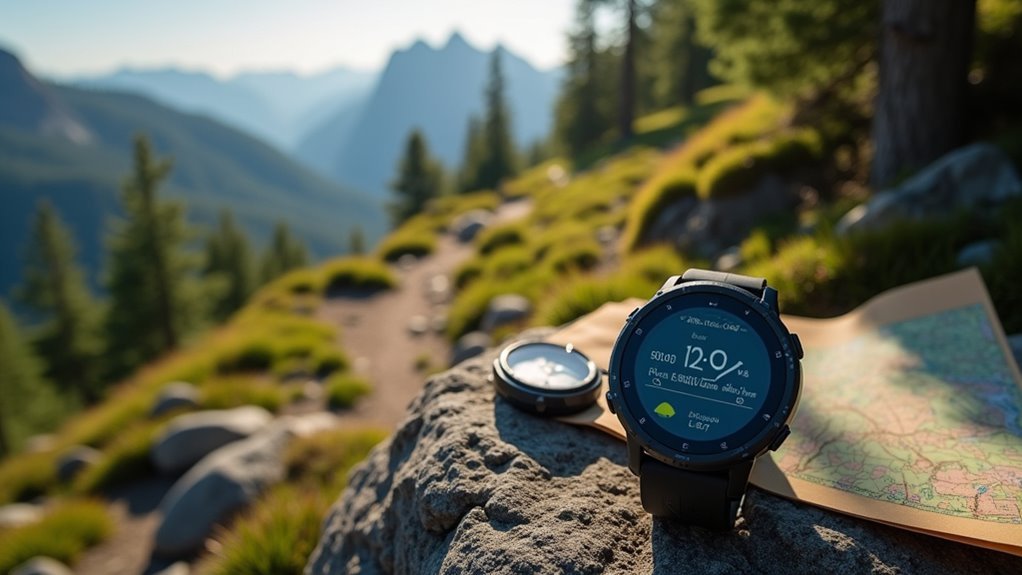
When you’re selecting a hiking wearable, ABC sensors—altimeter, barometer, and compass—form the foundation of navigation and safety features you’ll rely on in the wilderness.
Your altimeter measures elevation changes, helping you plan routes and detect true summits while avoiding false peaks. It’s vital for tracking your climbing progress and determining your position on topographic maps.
The barometer monitors atmospheric pressure changes, giving you early warnings about incoming weather systems. This data helps you make critical safety decisions about when to seek shelter or turn back. Displays of short-term pressure fluctuations are particularly useful for anticipating weather conditions during outdoor activities.
A reliable barometer transforms atmospheric pressure readings into life-saving weather intelligence for backcountry decision-making.
Your compass provides directional guidance when GPS signals fail in dense forests or deep valleys. It guarantees you maintain proper orientation and can navigate back to your starting point using traditional wayfinding techniques.
Altimeter Accuracy and Calibration Requirements
Among the ABC sensors, your altimeter demands the most attention for accurate performance. Barometric altimeters typically maintain accuracy within ±50 to ±75 feet over short periods, but they’ll drift considerably without regular calibration.
Weather changes directly impact barometric readings, making frequent calibration essential during changing conditions. You’ll need to calibrate your device at known elevation points like survey markers or trailheads.
GPS-based altimeters offer more reliability in open areas, while hybrid models combine both technologies for superior accuracy. Some devices feature auto-calibration based on movement detection, but manual calibration gives you greater control.
Remember that your altimeter excels at tracking elevation gain over time rather than pinpoint accuracy. Keep your device’s software updated, as algorithms considerably influence how pressure changes are interpreted for elevation calculations. For optimal performance, consider daily calibration when precision is critical for your navigation needs.
Battery Life Considerations for Multi-Day Adventures
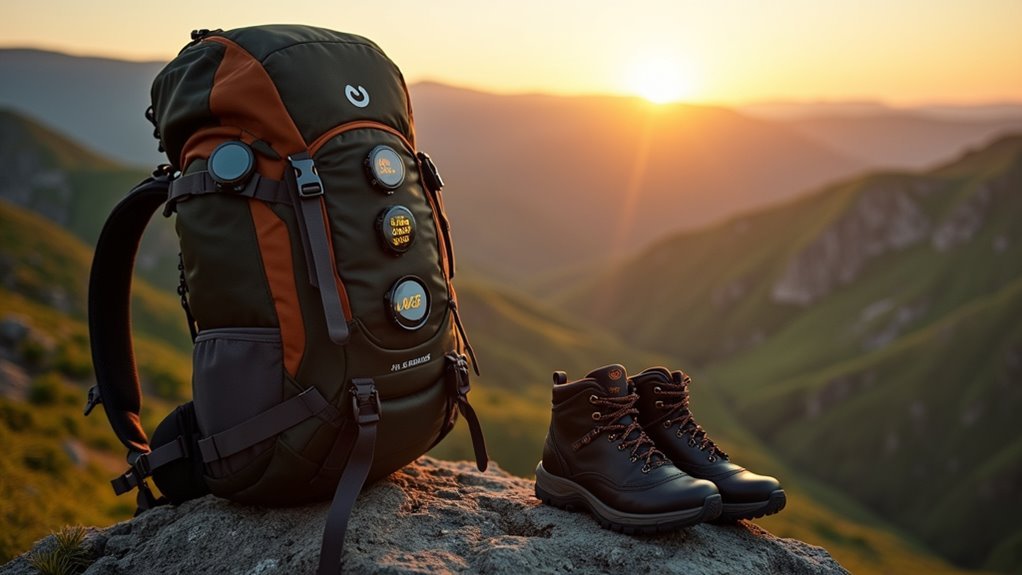
When you’re planning multi-day adventures, your wearable’s battery life becomes a critical factor that can make or break your trip.
You’ll need to master power management strategies like adjusting GPS recording intervals, dimming displays, and using low-power modes to stretch your device’s runtime beyond its standard specifications.
Solar charging capabilities can dramatically extend your off-grid operational time, potentially providing weeks of use compared to traditional charging methods that leave you dependent on power sources. The Garmin Enduro 3 offers potentially unlimited battery life with its solar charging technology, making it ideal for extended remote adventures.
Power Management Strategies
Since multi-day hiking adventures can stretch your gear to its limits, managing your wearable’s battery life becomes essential for maintaining guidance capabilities and safety features throughout your journey.
Strategic power management starts with understanding when to use GPS versus non-GPS modes. You’ll get up to 30 days of usage without GPS compared to notably shorter periods with continuous tracking enabled. Smart GPS modes automatically adjust tracking frequency to optimize consumption.
| Power-Saving Strategy | Battery Extension |
|---|---|
| Turn off GPS when not guiding | Up to 30 days usage |
| Use power-saving modes | 50-75% longer life |
| Keep screen off unless needed | Notable extension |
| Disable unnecessary features | Moderate improvement |
| Carry spare CR2032 battery | Backup power source |
Customize your display to show only essential data and consider alternating between GPS-on and GPS-off modes based on your guidance needs. Models with solar charging capabilities can significantly extend your operating time during daylight hours, making them particularly valuable for extended wilderness expeditions.
Solar Charging Benefits
Solar-powered hiking wearables revolutionize multi-day battery management by continuously supplementing your device’s internal power throughout daylight hours.
Devices like Garmin’s Instinct Solar and fēnix 7 Sapphire exhibit remarkably slow battery drain during continuous GPS tracking, enabling extended backcountry adventures without frequent recharging.
You’ll maximize solar benefits in high-altitude, open terrain where direct sunlight consistently hits your device.
The Sierra High Route exemplifies ideal conditions with minimal shading and stronger UV exposure. However, dense foliage, cloud cover, and variable terrain considerably reduce charging efficiency.
Solar integration maintains your device’s essential features—GPS, altimeter, and sensors—while preventing deep discharge periods that damage battery health. A typical 10-hour hike results in only 20-25% battery consumption when GPS tracking is enabled.
This technology reduces total charge cycles, extending overall battery lifespan and ensuring your wearable remains functional throughout multi-day expeditions.
GPS Integration and Mapping Capabilities
When you’re selecting a GPS hiking watch, you’ll want to prioritize models that support multiple satellite systems like GPS, Galileo, and GLONASS for maximum accuracy in challenging terrain.
Look for devices with preloaded topographic maps and the ability to download custom routes, so you can navigate confidently without relying on cellular connectivity.
The breadcrumb navigation feature becomes essential for tracking your path and safely retracing your steps back to your starting point. Consider devices with sapphire crystal screens for enhanced durability against scratches and impacts during rugged outdoor activities.
GPS Accuracy Enhancement
While modern GPS technology has revolutionized outdoor wayfinding, achieving ideal accuracy in challenging hiking environments requires understanding the key factors that influence signal quality. You’ll want to prioritize devices with multi-frequency support and multiple satellite constellation capabilities, as they provide better coverage in dense forests and urban canyons where signals often struggle.
| Feature | Basic GPS | Enhanced GPS |
|---|---|---|
| Satellite Systems | GPS only | GPS + GLONASS + Galileo |
| Signal Frequency | Single | Multi-frequency |
| Environmental Performance | Limited in obstacles | Improved accuracy |
| Update Intervals | Standard | 1-second precision |
Regular software updates improve your device’s algorithms, while quality antenna design guarantees stronger signal stability. Environmental factors like tall buildings and dense tree cover can significantly impact GPS performance, making dual-frequency technology particularly valuable for maintaining reliable tracking. These enhancements dramatically improve your positioning accuracy when you’re traversing challenging terrain.
Preloaded Trail Maps
Enhanced GPS accuracy becomes markedly more valuable when paired with extensive preloaded trail maps that eliminate your dependence on cellular connectivity during remote adventures.
Garmin fenix series watches include preloaded TopoActive color maps covering all U.S. national parks, while Suunto requires manual downloads through their app.
You’ll find AMOLED displays on models like the Forerunner 965 deliver crisp visuals, though MIP screens offer better battery life with less vivid colors.
Premium subscription services like Garmin’s Outdoor Maps+ provide enhanced overlays including satellite imagery and campgrounds for around $50 annually.
These preloaded maps integrate seamlessly with GPS for flexible route exploration beyond predetermined tracks. Many models also feature point-and-go navigation for simplified waypoint routing when exploring unfamiliar terrain.
Breadcrumb Navigation Features
Most hiking wearables offer breadcrumb navigation as a simplified alternative to full topographic mapping, displaying your traveled route as a series of connected dots or lines that you can follow back to safety.
You’ll find this feature on devices like Garmin Forerunner and Apple Watch, which provide GPS accuracy essential for reliable tracking. While these watches don’t include full mapping capabilities, their graphical breadcrumb screens help you visualize your route effectively.
You can create routes using platforms like Garmin Connect or Komoot, then import them onto your device. The system alerts you when you stray from your loaded track, though you’ll need to stop occasionally to check directions. Modern devices with watchOS 9 include enhanced waypoint features that allow you to mark specific locations for easier navigation reference points.
Breadcrumb trails work best in less complex terrain and serve as excellent complementary tools alongside traditional navigation methods.
Durability and Weather Resistance Standards
When you’re selecting hiking wearables, understanding durability and weather resistance standards becomes essential for making certain your device won’t fail when you need it most.
Look for IPX7 waterproofing, which means your device can handle submersion up to one meter for thirty minutes. You’ll want rugged casings that resist drops, impacts, mud, and dust while maintaining functionality across extreme temperature ranges.
Check that your device operates effectively at high altitudes—quality barometric altimeters measure elevation up to 30,000 feet. Storm alerts based on barometric pressure trends provide valuable weather forecasting. Remember that drastic temperature changes can affect altimeter accuracy, so consider models that offer easy recalibration features.
Make sure your wearable includes humidity resistance, scratch-resistant coatings, and corrosion-resistant materials for longevity in wet conditions. These standards guarantee reliable performance whether you’re facing freezing temperatures, scorching heat, or unexpected storms on challenging trails.
Display Quality and Usability in Outdoor Conditions
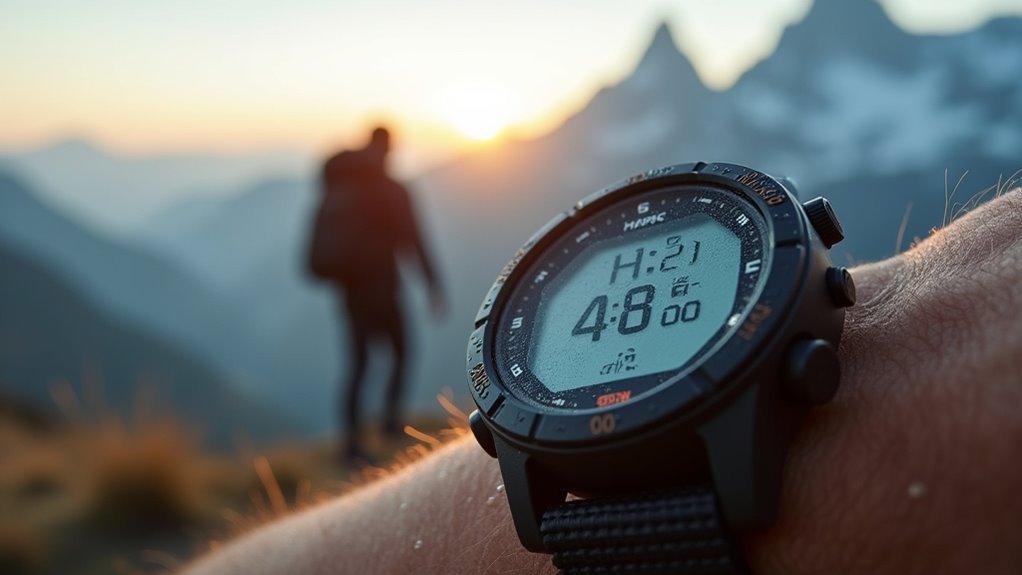
When you’re hiking in bright sunlight or dim forest conditions, your wearable’s display becomes critical for quick navigation and data readings.
You’ll need to evaluate whether the screen remains clearly visible in harsh outdoor lighting and if you can operate it effectively with wet or gloved hands.
The choice between button navigation and touchscreen functionality often determines whether you’ll struggle with basic operations during challenging weather conditions. Modern hiking watches with solar charging capabilities can maintain display brightness and functionality for extended periods without requiring frequent battery replacements during multi-day adventures.
Screen Visibility Outdoors
How clearly can you read your hiking watch’s display when you’re squinting against blazing midday sun on an exposed ridge? Your altimeter watch needs exceptional outdoor visibility to deliver critical elevation data when conditions get challenging.
Brightness levels make the difference between readable displays and frustrating squinting sessions. Always-on AMOLED screens like Garmin’s epix Pro Gen 2 maintain visibility even through sunglasses, while transflective displays cleverly use ambient light without draining your battery. MIP displays offer excellent readability in bright sunlight, though you may experience temporary visibility issues when transitioning from blazing sun into shaded areas.
Key visibility features you’ll want:
- Anti-reflective coatings that cut screen glare
- High contrast ratios for sharp digit separation
- Sapphire or Gorilla Glass protection against scratches
- Adjustable backlighting for shaded forest conditions
- Oleophobic coatings that repel sweat and fingerprints
Your display’s clarity directly impacts navigation safety and altitude monitoring accuracy.
Button Vs Touchscreen
Which control method serves you better when you’re maneuvering treacherous terrain with numb fingers and a rain-soaked display?
Button-based watches deliver unwavering reliability when conditions turn harsh. You’ll navigate menus effortlessly with gloves on, while wet or muddy screens won’t compromise your operation. Physical buttons provide tactile feedback that touchscreens can’t match in challenging environments.
Touchscreen models excel in detailed navigation and intuitive map interaction. Premium AMOLED displays offer vivid visuals and higher pixel density, making waypoint marking more precise. However, you’ll struggle with accidental inputs during dynamic activities.
| Buttons | Touchscreen |
|---|---|
| Reliable in wet conditions | Unreliable when wet |
| Glove-friendly operation | Struggles with gloves |
| Fewer accidental inputs | Prone to accidental swipes |
| Faster for experienced users | Intuitive for beginners |
Hybrid controls increasingly bridge this gap, offering both reliability and versatility. Even premium models with sapphire crystal glass faces prioritize button layouts for critical navigation functions during challenging outdoor conditions.
Power Management and Solar Charging Options
Since hiking wearables rely heavily on battery power for extended outdoor adventures, understanding power management becomes essential for maintaining functionality throughout your journey.
You’ll find that hiking watches typically offer 14 hours to 23 months of battery life depending on your chosen settings and features.
Managing your device’s power effectively involves several key strategies:
- Activate power-saving modes to extend GPS tracking time up to 40+ hours
- Switch between continuous GPS and Ultra Trac modes to optimize battery usage during different hiking phases
- Control sensor activity by disabling unnecessary features like heart rate monitoring when not needed
- Consider solar-enabled models like Garmin’s solar devices for field recharging capabilities
- Use companion apps to monitor battery levels and adjust settings remotely
Solar charging supplements but rarely fully replaces traditional charging methods.
Many hiking watches include Battery Saver features that automatically disable when charged to 80% capacity and are specifically designed for conserving battery during non-activity periods between your outdoor adventures.
Budget Vs Premium Feature Comparison
When you’re deciding between budget and premium hiking wearables, you’ll face a classic trade-off between essential functionality and advanced features.
Budget models ($100-$300) excel at core altimeter functions with replaceable batteries lasting months, clear displays, and basic water resistance. You’ll get reliable elevation tracking, barometer readings, and compass functionality without GPS complexity.
Premium devices ($300-$700+) offer advanced displays, GPS navigation, detailed mapping, and smartphone connectivity. They include health tracking sensors, automatic calibration, and enhanced water resistance for swimming. However, you’ll deal with shorter battery life between charges and higher complexity. Leading brands like Garmin, Suunto, and Coros dominate the premium GPS watch market with their advanced multisport features and rugged designs.
For casual hikers prioritizing simplicity and battery longevity, budget models provide excellent value.
Serious adventurers needing navigation, detailed tracking, and connectivity features will find premium devices worth the investment despite increased complexity and maintenance requirements.
Brand Reliability and Customer Support
Brand reputation serves as your first indicator of long-term satisfaction with hiking wearables, and the outdoor gear market has several standouts worth considering.
Brand reputation acts as the most reliable predictor of your long-term satisfaction with any hiking wearable investment.
Each major manufacturer brings distinct strengths to reliability and customer support that’ll impact your ownership experience.
Here’s what you can expect from leading brands:
- Suunto – Delivers proven durability with user-serviceable batteries, backed by strong community forums
- Casio – Offers exceptional build quality requiring minimal repairs, though limited online community resources
- Garmin – Provides thorough warranty coverage and extensive user forums, but repairs typically need professional service
- Coros – Features easy maintenance with growing community support and reliable customer service
- All brands – Include standard warranties covering manufacturing defects and material workmanship
Your choice should align with your technical comfort level and desired support access.
Weight and Comfort for Extended Wear
While a feature-packed hiking watch won’t help you on the trail if it’s too heavy or uncomfortable to wear for hours at a time, finding the right balance between functionality and wearability becomes essential for serious hikers.
Look for watches weighing between 60-95 grams, with models like the Casio Pro Trek 340SC-2 at 60 grams offering excellent lightweight performance. Titanium and advanced polymer materials reduce weight without sacrificing durability.
Pay attention to ergonomic design and weight distribution—a well-balanced watch won’t feel cumbersome on your wrist. Choose adjustable straps that accommodate wrist circumferences from 108-225mm.
Silicone straps offer superior breathability during extended wear, while proper fit prevents irritation. Remember that comfort features directly impact your hiking experience and device usage consistency.
Frequently Asked Questions
Can I Use My Hiking Altimeter Watch for Other Sports Activities?
You can definitely use your hiking altimeter watch for other sports. Most models include preloaded profiles for running, cycling, swimming, and skiing, with relevant metrics and GPS tracking capabilities for each activity.
How Do I Update Firmware and Software on My Altimeter Watch?
You’ll update your altimeter watch firmware through the manufacturer’s official app like Garmin Connect or SuuntoLink software. Make sure you’ve got sufficient battery, stable connectivity, and backup your data before starting updates.
What Happens if My Altimeter Watch Gets Damaged During a Hike?
If your altimeter watch gets damaged during a hike, you’ll need to assess whether it’s mechanical impact, water damage, or environmental factors, then decide between repair or replacement based on cost and warranty coverage.
Are Altimeter Watches Compatible With Third-Party Hiking Apps and Accessories?
Yes, you’ll find most altimeter watches sync with popular hiking apps like Strava and AllTrails through GPX files. They’re also compatible with external sensors like heart rate monitors via Bluetooth or ANT+.
How Do I Transfer Hiking Data From My Watch to Computer?
Connect your watch to your computer using a USB cable, then use manufacturer software like Garmin Basecamp or Garmin Express. You’ll export your hiking tracks as GPX files for backup and analysis.
In Summary
You’ll find success choosing hiking wearables with altimeters by prioritizing your specific needs. Don’t compromise on ABC sensors if you’re traversing challenging terrain. Balance battery life with features you’ll actually use, and guarantee GPS integration matches your mapping requirements. Invest in weather-resistant models for harsh conditions, but don’t overspend on premium features you won’t need. Choose reputable brands with solid support, and prioritize comfort for extended adventures.

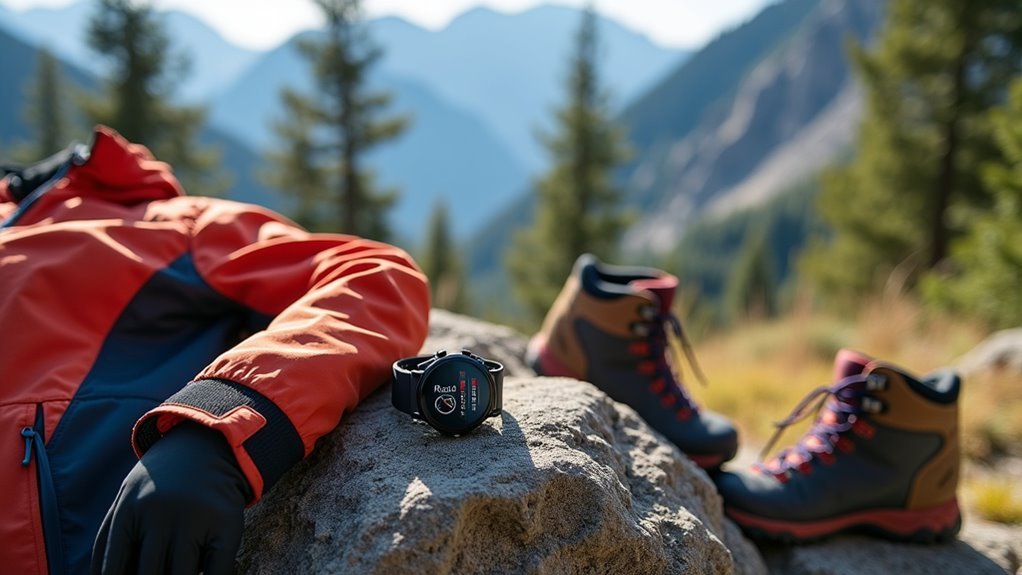
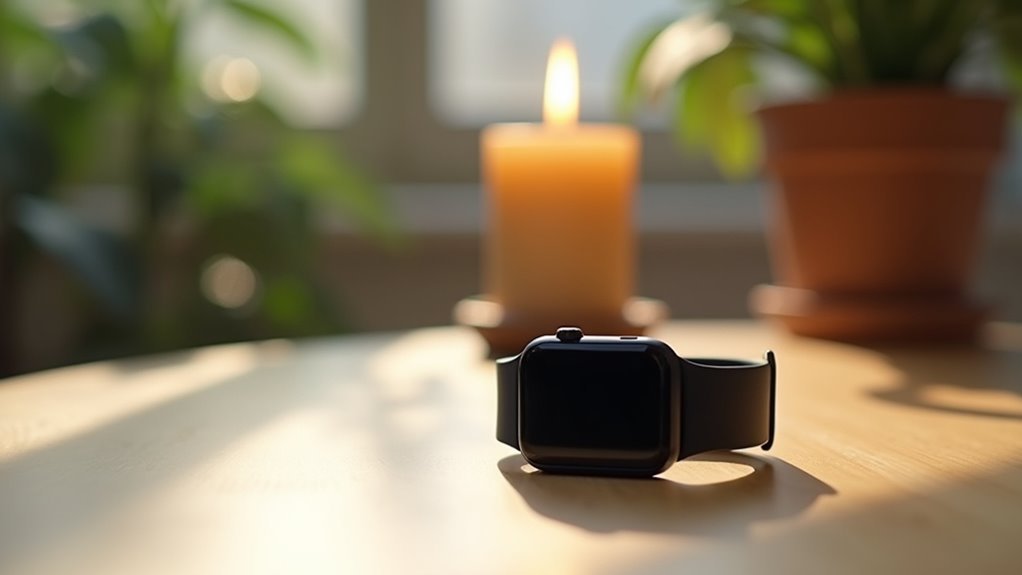

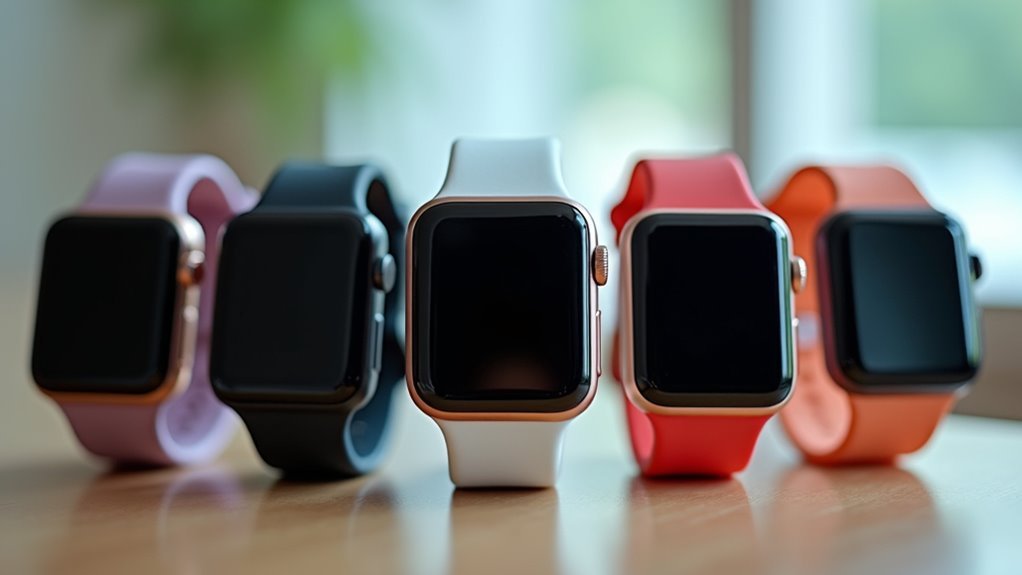
Leave a Reply